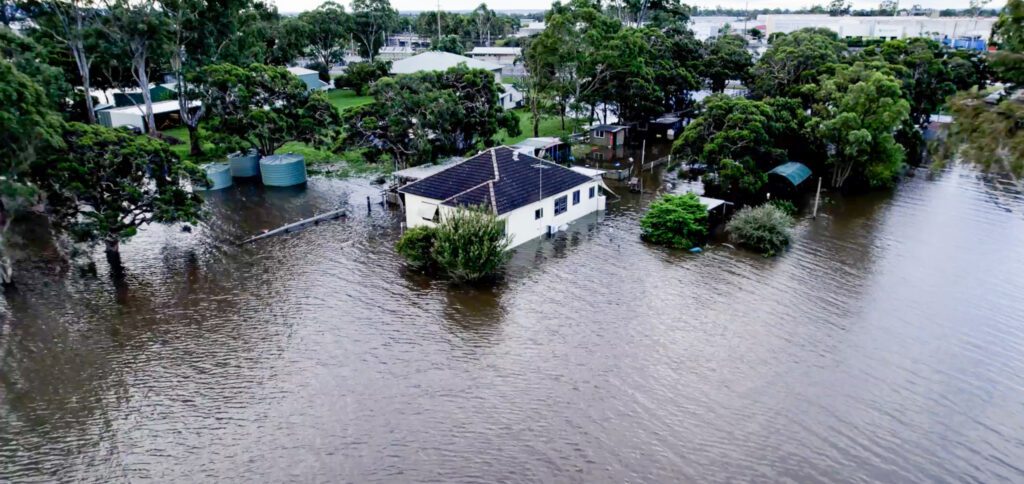Flooding is one of the most widespread natural disasters in the United States. From coastal cities to river valleys, nearly every area is at risk. As such, understanding flood insurance is essential for homeowners and renters alike. This blog post will cover flood insurance, why it’s important, how it works, and what you must consider when purchasing a policy.
What is Flood Insurance?
Flood insurance protects property owners from financial loss due to flooding. Unlike standard homeowner’s insurance policies, which typically do not cover flood damage, flood insurance provides coverage for your home’s structure and its contents. Flood insurance policies are offered through the National Flood Insurance Program (NFIP) and private insurance companies.
Types of Flood Insurance
There are generally two types of flood insurance:
- Building Property Coverage: This covers the physical structure of your home, including the foundation, plumbing, electrical systems, and major appliances. Coverage limits vary, but you can insure your home for up to $250,000 under NFIP.
- Personal Property Coverage: This covers your personal belongings, including furniture, electronics, clothing, and other valuables. NFIP offers coverage up to $100,000 for personal property.
Why is Flood Insurance Important?
Flood insurance is crucial for several reasons:
- High Risk of Flooding: According to the Federal Emergency Management Agency (FEMA), about 20% of flood insurance claims come from areas not considered high-risk for flooding. This means that even if you live in a low-risk zone, you could still experience flooding.
- Mortgage Requirements: If you live in a high-risk flood zone and have a federally-backed mortgage, your lender will likely require you to purchase flood insurance. This is to protect both your property and your investment.
- Financial Protection: Flooding can cause significant damage, often costing thousands of dollars in repairs. Without flood insurance, you would be responsible for covering these costs out-of-pocket.
- Disaster Relief: In the aftermath of a flood, government assistance may not be available to everyone. Having flood insurance ensures that you have financial support when you need it most.
Understanding Flood Zones
FEMA classifies areas into different flood zones based on their risk level. These zones are indicated on Flood Insurance Rate Maps (FIRMs). Understanding your flood zone can help you assess your risk and determine whether you need flood insurance.
- High-Risk Areas (Zone A and V): These areas have a 1% chance of flooding each year (known as the “100-year flood”). Homeowners in these zones are typically required to have flood insurance.
- Moderate-Risk Areas (Zone B and X): These areas have a lower risk of flooding but still have a chance of experiencing flooding events. Homeowners in these zones may not be required to purchase flood insurance, but it is still a wise choice.
- Low-Risk Areas (Zone C and X): These areas have a minimal risk of flooding. Homeowners can often purchase flood insurance at a lower cost, which may be a good investment for peace of mind.
How Does Flood Insurance Work?
Flood insurance policies generally follow a few standard guidelines:
- Waiting Period: There is usually a 30-day period before your flood insurance policy takes effect. You cannot purchase a policy just before a storm and expect to be covered.
- Deductibles: Flood insurance policies come with deductibles you’ll have to pay out-of-pocket before the insurance kicks in. Higher deductibles can lower your premium, but they also mean more financial responsibility in the event of a flood.
- Claims Process: After a flood, you must file a claim with your insurance provider. This involves documenting the damage and providing necessary information to your insurer. Once your claim is approved, you’ll receive compensation based on your coverage limits and the extent of the damage.
- Policy Limits: NFIP policies limit how much you can claim for a building and personal property. It’s essential to assess your needs and determine whether additional coverage through a private insurer is necessary.
Tips for Purchasing Flood Insurance
- Assess Your Risk: Before purchasing flood insurance, use FEMA’s flood maps to assess your property’s flood risk. This will help you determine the level of coverage you need.
- Understand Policy Options: Research different policies available through NFIP and private insurers. Compare coverage limits, deductibles, and premiums to fit your needs best.
- Consider Additional Coverage: If your property is at high risk for flooding or if you have significant valuable possessions, consider purchasing additional coverage beyond what NFIP offers.
- Review Annually: Your flood risk may change over time due to various factors, including changes in climate and local development. Review your policy annually and adjust your coverage as necessary.
- Work with a Trusted Agent: When purchasing flood insurance, working with an agent who understands flood insurance is beneficial. They can help you navigate the complexities of coverage options and ensure you choose the right policy.
Conclusion
Flood insurance is a crucial aspect of homeownership that many people overlook. With the increasing frequency and severity of flooding due to climate change, understanding your flood risk and securing appropriate insurance coverage is more critical than ever. Whether you live in a high-risk flood zone or a low-risk area, having flood insurance can provide peace of mind and financial protection against one of nature’s most unpredictable disasters. By researching, assessing your risk, and working with knowledgeable professionals, you can safeguard your property and your future against the impacts of flooding.









